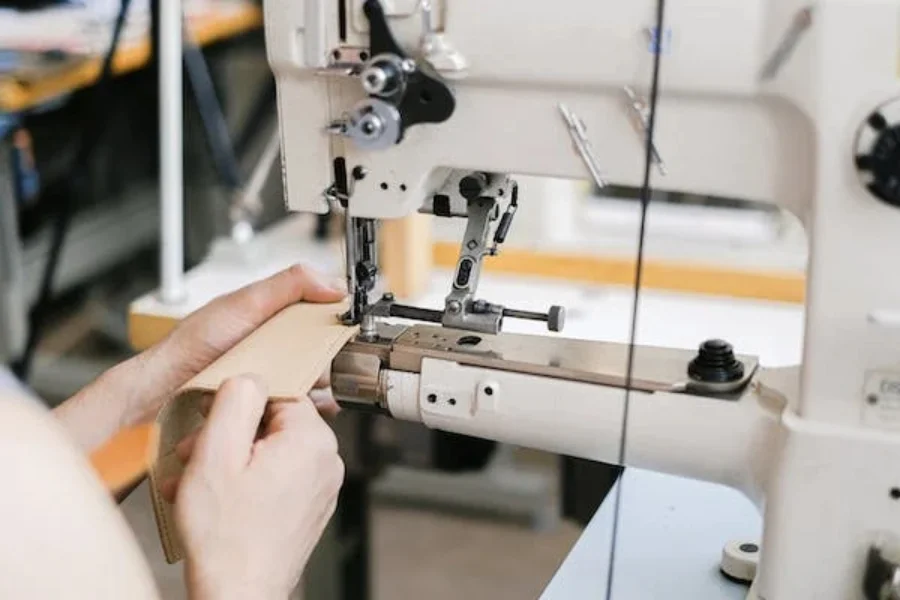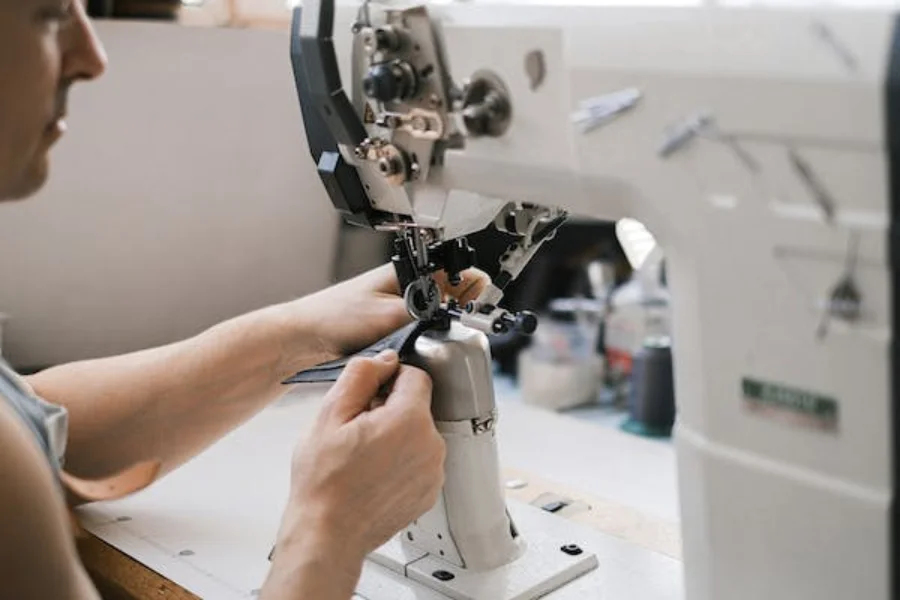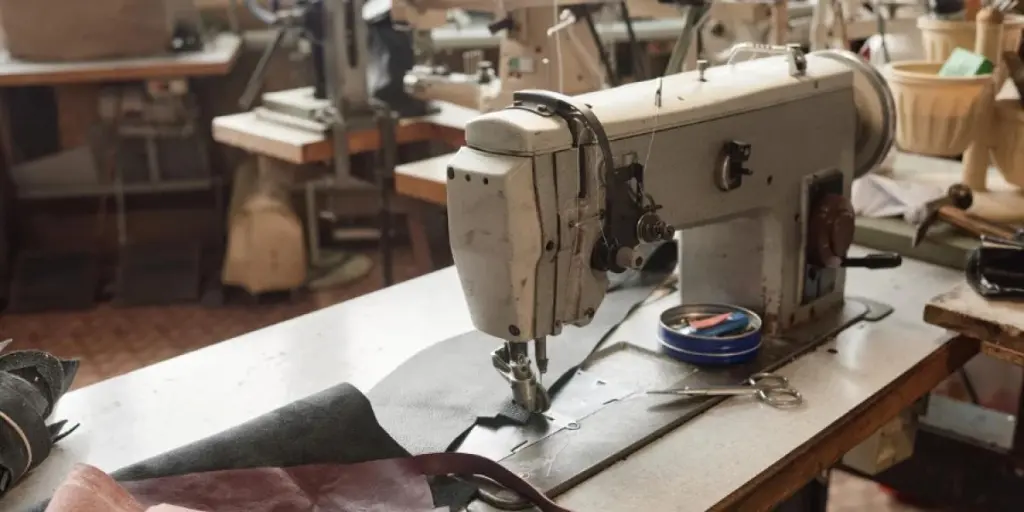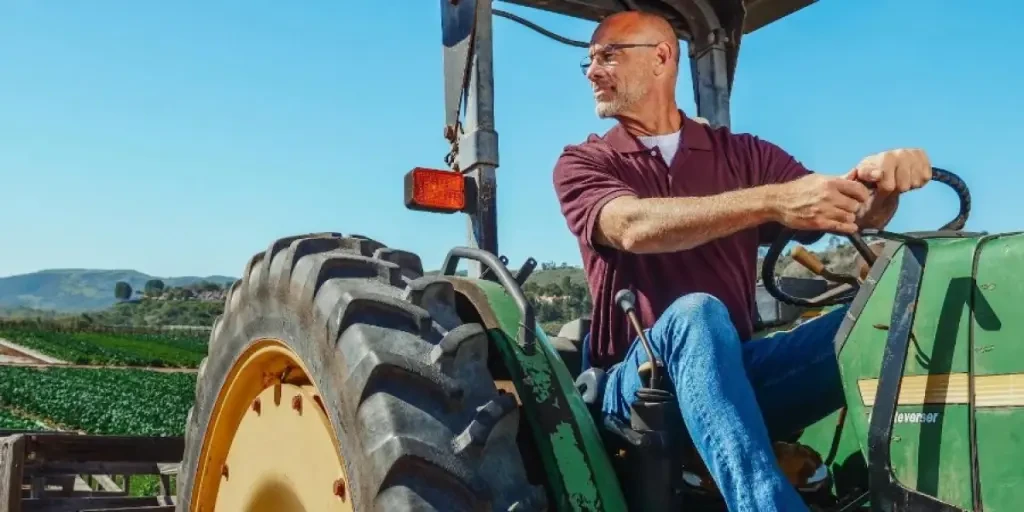Sewing leather can be tricky compared to other types of fabric. Leather is stiff for needles to penetrate. Therefore, particular kinds of sewing machines make working with leather smooth. Leather sewing machines can sew various products such as apparel, shoes, bags, wallets, balls, and belts.
That said, this guide will discuss tips to help businesses select leather sewing machines.
Table of Contents
Leather sewing machines market overview
Tips for selecting the right leather sewing machine
Types of leather sewing machines
Technology trends of leather sewing machines in the future
Conclusion
Leather sewing machines market overview
The global market for leather sewing machines is worth $4.4 billion and is expected to grow to $6.0 billion at a compound annual growth rate (CAGR) of 5.2% from 2022 to 2028.
The reason for an upward projection in the market size for the machines is the increasing demand for high-quality attire, the growing population, and the availability of quality mechanical, electronic and computerized sewing machines in the market.
Tips for selecting the right leather sewing machine
There are crucial factors users need to consider while choosing leather sewing machines.
Maximum sewing thickness
The machines come in different designs to suit the sewing of different thicknesses of leather. Some suit light leather, while others are suitable for working on medium leather. They can take ¼ inch, ⅜ inch, or ½ inch leather thickness.
Other sewing machines can handle thick leather of up to an inch thick. Therefore, businesses should have different sizes of leather sewing machines available to suit the needs of other customers.
Thread sizes
Checking the thread size helps pick the sewing machine correctly. There are those machines that are limited to a thin thread, while there are others that allow a large thread size. Most devices use thread sizes 33 to 138.
Others use thread sizes of up to 277. Heavy-duty ones for mass production use up to 415. Bags and wallets can use sizes 69 or 92. Hence, sellers should know that there are sewing machines available that offer different thread sizes.
Special features, add-ons, and attachments
Sewing machines can have additional features on them that assist consumers in working with them conveniently. These add-ons include a swing-down edge guide, flatbed attachments, and automatic needle positions.
Businesses should consider stocking leather sewing machines with these specs available to suit customers with special requirements.
Motor
To make the leather sewing process more manageable, the machines have a servo motor attached to help control the sewing speed in leather products embroidery. In addition to the variable speed motor, a speed reducer combines with the engine to regulate the stitching speed to nearly one stitch per second.
Users can sew the products at their own pace while paying more attention to detail. Therefore, businesses should include machines with a motor in their shopping list.
Needle sizes
Focusing on the size of the needle the machine uses for sewing is crucial. Some sewing machines have thin needles, while others use thick ones. Light and medium sewing machines use needle sizes 18 to 24, while heavy-duty ones use 27.
To suit the material one works on, one should acquire a compatible sewing machine. Sellers must include sewing machines with different needle sizes for their customers.
Speed
Before buying a leather sewing machine, check the sewing speed it can handle. Fast machines can finish many products in less time than sewing machines with slow speeds that take long hours to complete a single project.
For small-scale leather sewing, machines with low speeds are suitable. Workshops that have bulk projects should consider appliances with a high stitch-per-second rate. Sellers should therefore acquire devices with different speeds to suit customers’ requirements.
Types of leather sewing machines
In the market, there are different varieties of leather sewing machines. These types include cylinder arm, flatbed, and post-bed sewing machines.
Cylinder arm machines

A cylinder arm machine works on leather areas difficult to reach, corners, patches, or cylinder-shaped items such as bags. The sewing area is open around the cylinder arm, making it easy to move and turn without the need to fold or roll the leather item.
Pros
– They are versatile as they can sew a variety of products.
– They sew in intricate places other machines cannot reach.
Cons
– Although they are versatile, it can be challenging to sew flat products.
– The cylinder arm size can be limited.
Flatbed machines

A flatbed machine suits the sewing of flat products like leather attire, belts, collars, and wallets. The product lays flat and gets support from the machine’s and table’s flat surface.
Pros
– They are perfect for flat products.
– Their flat surface helps work on large leather pieces.
Cons
– They cannot handle tubular shapes.
– They are not suitable for sewing hard-to-reach areas in leather.
Post-bed machine

The post-bed machines have a raised bed that gives a sewer more working space. The devices can sew technical items like footwear. Post-bed machines also feature a roller foot which assists in sewing logos and patches.
Pros
– They work well on complicated products like boots, tents, and vehicle upholstery.
– They suit many creative works with the shapes and designs they make.
Cons
– Sewing flat products can be cumbersome.
Technology trends of leather sewing machines in the future
The leather sewing industry is seeing an emergence of new inventions resulting from advancements in technology. Not only are these trends making the sewing process more accessible, but they also enhance competition. Some of these trends are as follows.
Pedal less sewing
The foot pedal is one of the areas where a sewer spends most of their time while controlling the leather sewing process. Today, manufacturers are coming up with electronically controlled sewing machines to dodge the old pedal sewing techniques.
The devices have intelligence and auto modes, where machines take control without needing foot pedaling.
Real-time monitoring of sewing machines
Automation in machinery is becoming a norm, and monitoring the production process while sewing is possible.
Intelligent sewing machines can connect to a network where users can remotely see the machine’s production status via a smartphone or tablet, thus helping detect any issues early and boosting productivity at a workshop.
Automatic bobbin changer
A sewing machine may suddenly stop when a bobbin thread is fully depleted and requires a new thread. Usually, changing a bobbin thread requires some time. For the sewing machine to operate without interruptions, sewing machines feature automatic bobbin changers.
They can carry up to 8 bobbin threads in the exchange plate for replacement once a thread is fully consumed. The benefit is that it helps reduce downtime and enhance productivity.
Conclusion
Depending on the needs of a consumer, there is a type of machine to suit their project. Sellers should have different kinds of leather sewing devices available. With these tips, businesses can source suitable leather sewing machines with ease.




